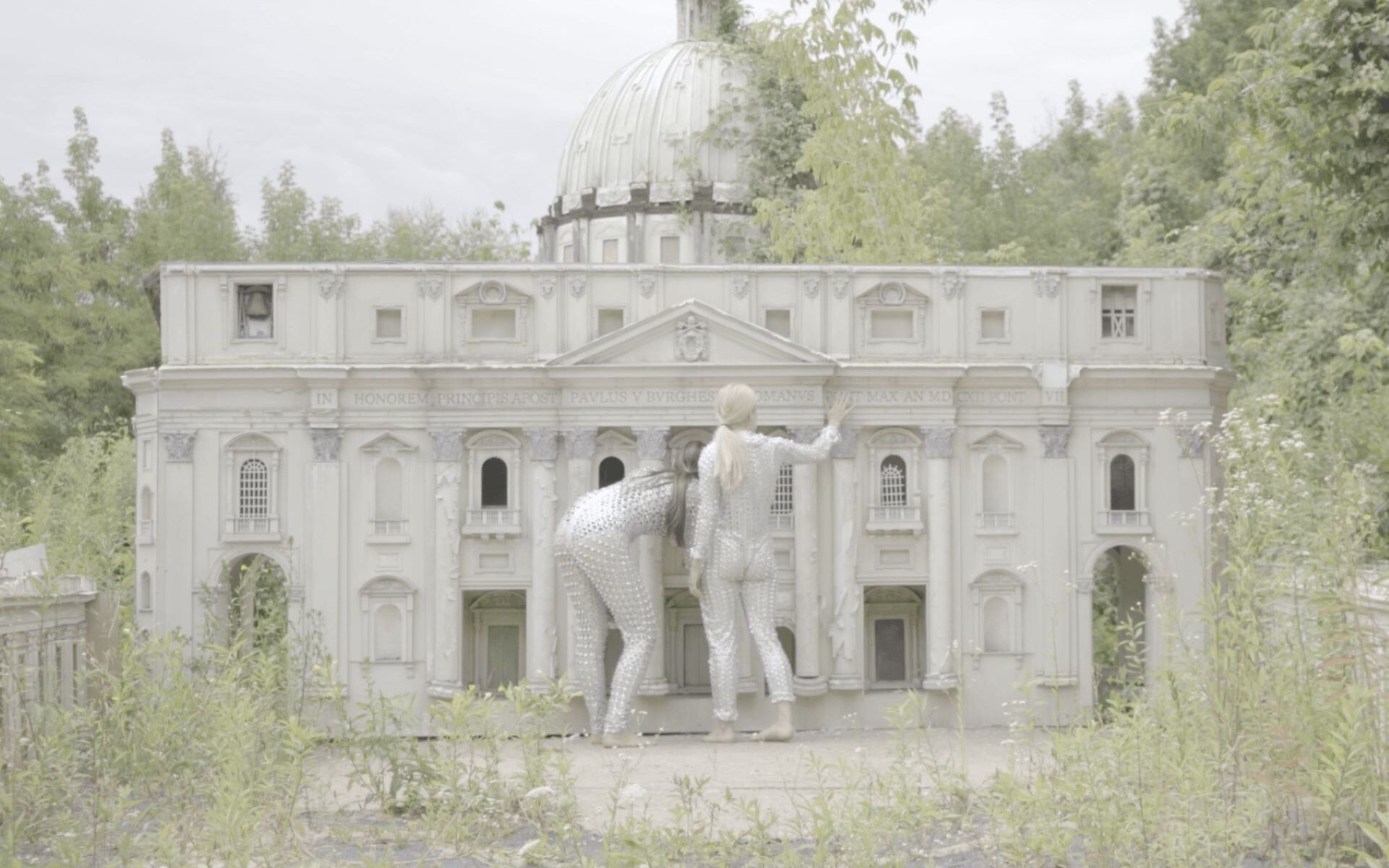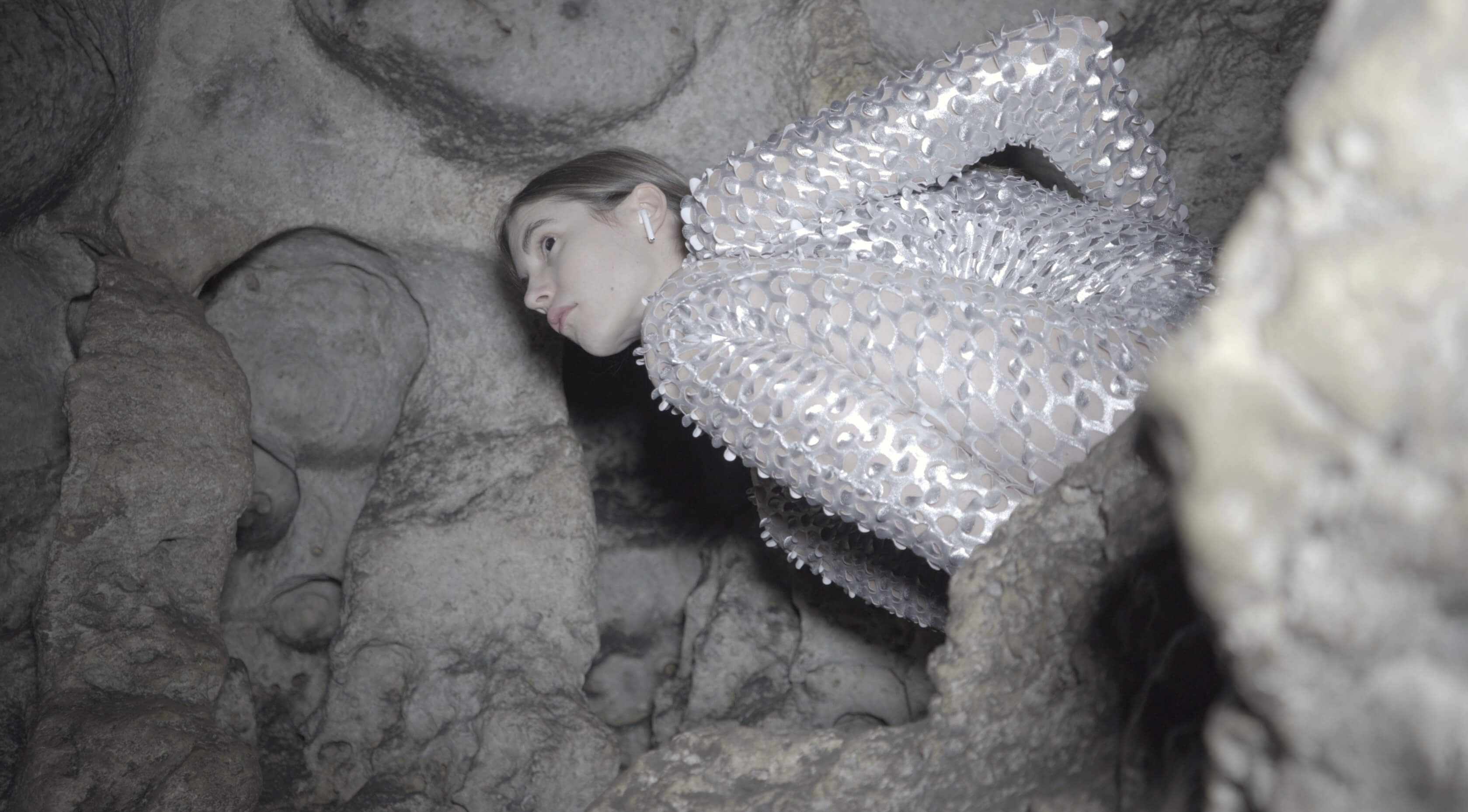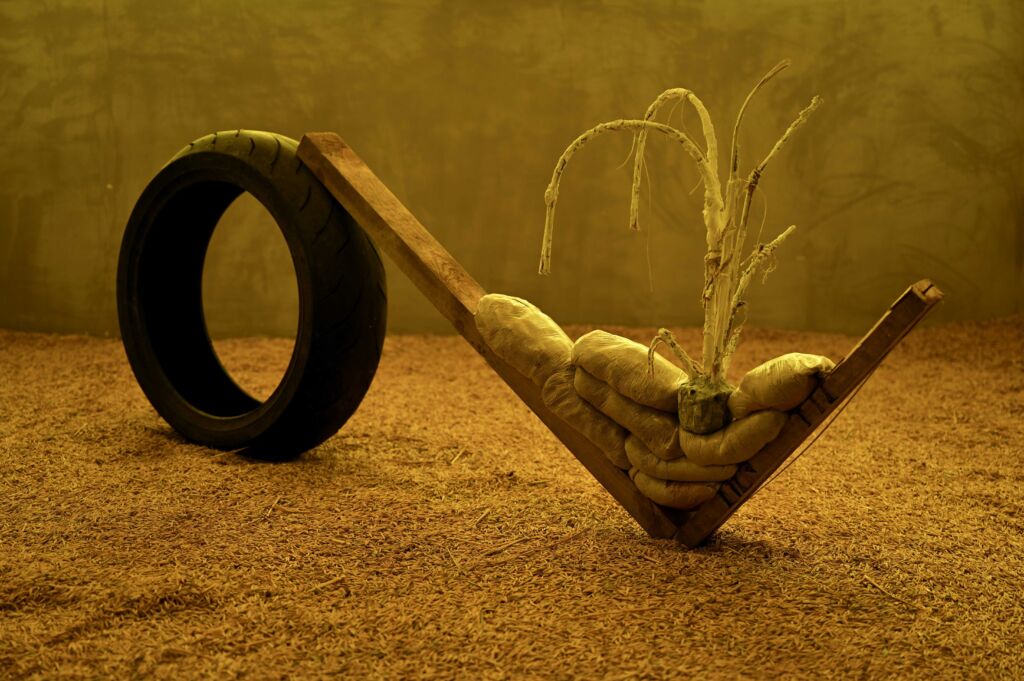After us
Studio BWA Wrocław closes the year 2023 with a presentation of possible future scenarios inspired by archeofuturism and outdated visions of the apocalypse.
After Us is an exhibition created entirely by people the oldest of whom is thirty. Join our quest for past futures – the times which never came but may still materialize, dug out of the depths of imagination.

The world as we know it is fading away. Predicting the future is one of the oldest activities known to man, and a powerful one at that – foreseeing what will happen goes back to the dawn of civilization. From divination and clairvoyance, it then turned into more sophisticated, though still duly discredited forms of foresight connected with futurology. When katechons prophesied next visions of the apocalypse, many doomsdays remained a mere promise, and the portended slow ending of the future turned out to be yet another wrong prediction.
The After Us exhibition attempts to cut across the apocalyptic and techno-optimistic discourses connected with the presence of humans (and not only humans) on planet Earth in the future. The artworks span a variety of media, ranging from a book and video to spatial installations. They look into human and non-human inner selves, searching for a link coagulated in formaldehyde (Weronika Zalewska), others observe the bubbliness of fate and line of our life (Linda Lach), still others design the distant future in order to save the past (Anna Banout).


The oldest among us are thirty, says the curator of the exhibition Cezary Wicher, quoting Marinetti’s “Futurist Manifesto” (1909) to describe the creators of After Us. Both the artists and the curator represent the young generation, post-digital Gen Y and Z. They share a vibrancy of thought, search for new, current fundamentals of being in the world, forgotten sources of knowledge or speculative fabulations.
The impulse for thinking about the construction of this exhibition was a series of works by the 19th/20th-century French graphic artist Jean-Marc Côté. Prepared for the Universal Exhibition in Paris, the series “En l’an 2000” reflected the great hopes pinned on the times to come – the gesture of imagining the end of a century which has just begun was an extremely optimistic version of the development of the world: technological progress bringing liberation, says the curator.
Years later, the French artist’s predictions were collected by the science fiction writer Isaac Asimov, who then published the previously dispersed graphic works in his book “Futuredays”. In this gesture of an archivist, the scattered images found their place in a single publication about the future which has not come yet, even though it lurked round the corner, adds Cezary Wicher.

It is an exhibition about possible future scenarios. After all, in Polish the difference between past and future – przeszłość and przyszłość – is only a single letter.
Sensory information:
– for people who are allergic to food allergens present in oat grains: oats will be sprinkled throughout the exhibition in one room.
Cezary Wicher – graduated in Polish philology and cultural studies from the University of Wrocław. Wrote about literature and visual arts. Member of programme teams of WRO 2021 and WRO 2023, curator of the exhibition Mikoryza. In BWA Wrocław since 2021, currently an exhibition producer.
- Artists: Anna Banout, Eternal Engine (Martix Nawrot i Jagoda Wójtowicz) + Karolina Grygier, Agata Konarska i Agata Lankamer, Jakub Kosecki, Linda Lach, Zuzanna Piekoszewska, Zuzanna Wołejko, Weronika Zalewska
- Curator: Cezary Wicher
- Producer: Gabriela Pezda
- Visual identification: Kinga Gralak
- Promotion: Żaneta Wańczyk
- Curator of Studio BWA Wrocław: Joanna Stembalska
- Partner: Port Lotniczy Wrocław S.A.